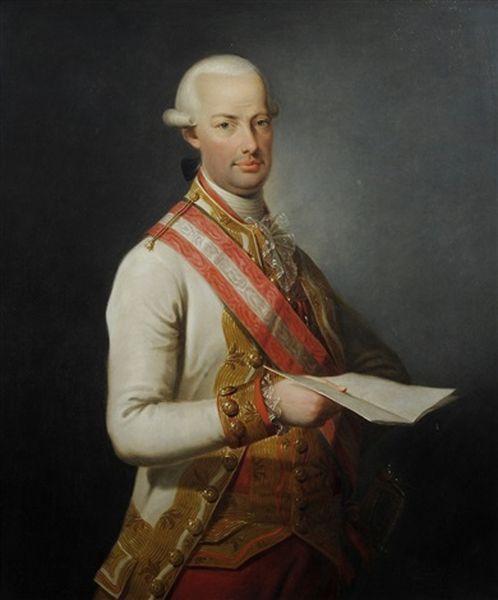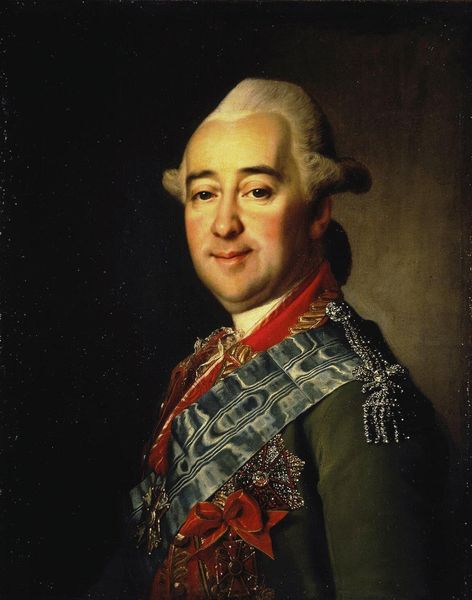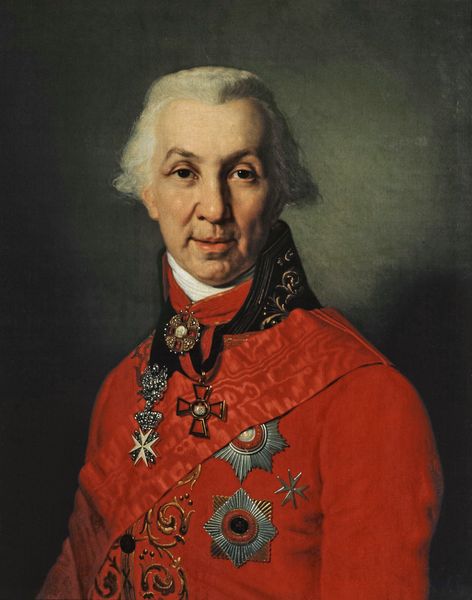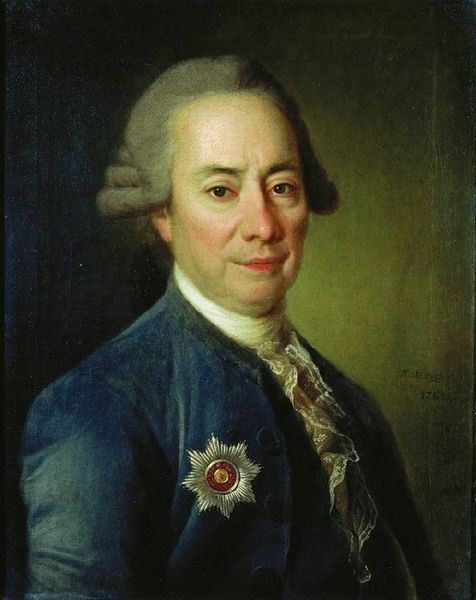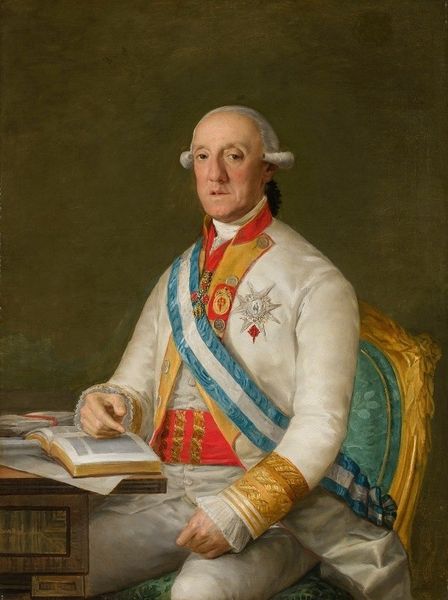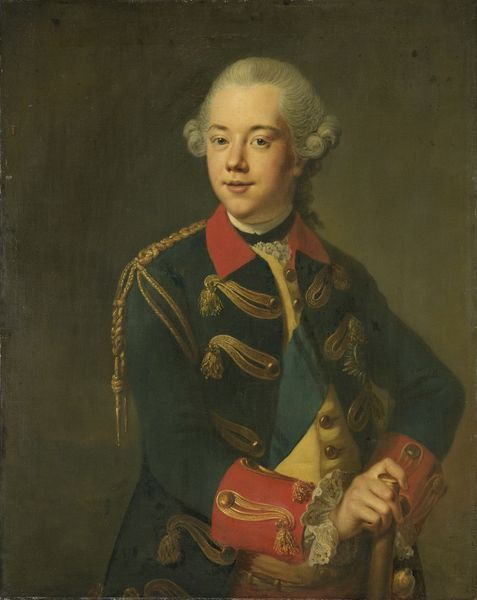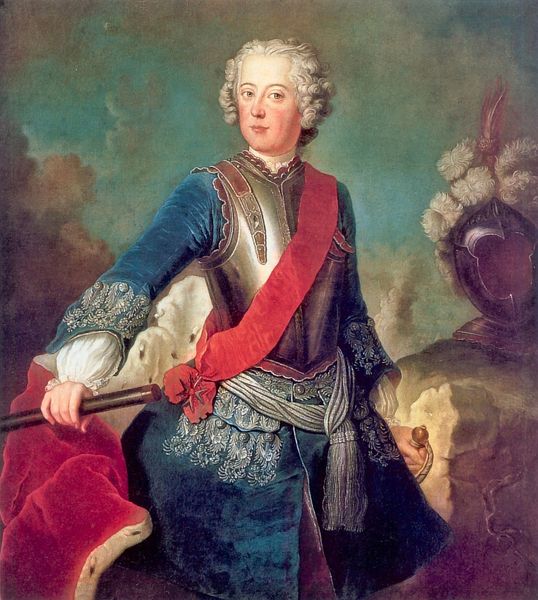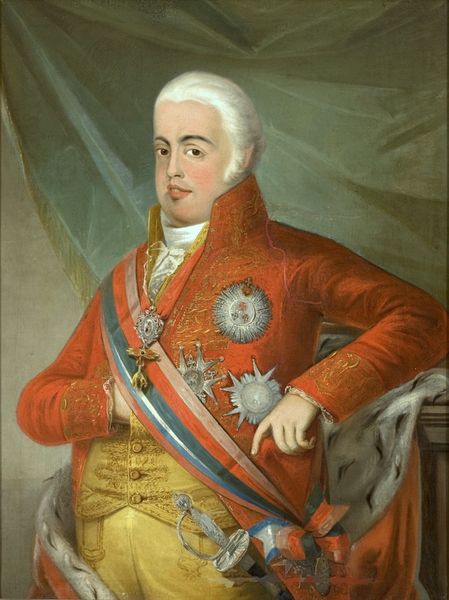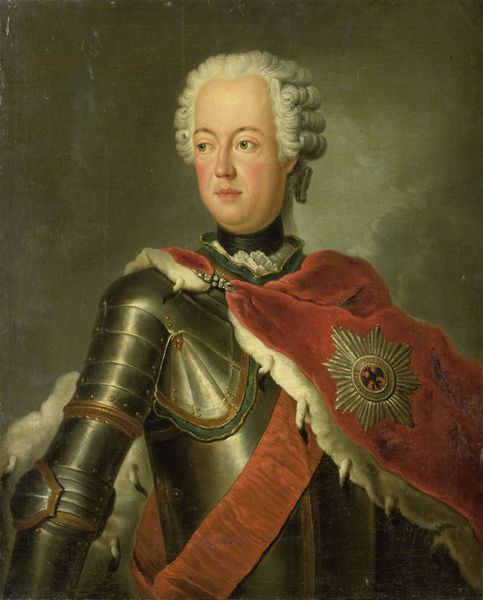
painting
#
portrait
#
neoclacissism
#
character portrait
#
portrait image
#
portrait
#
painting
#
portrait reference
#
male-portraits
#
portrait head and shoulder
#
portrait drawing
#
history-painting
#
facial portrait
#
academic-art
#
lady
#
portrait art
#
fine art portrait
#
celebrity portrait
Copyright: Public domain
Editor: So, here we have Vladimir Borovikovsky's "Ivan Dunin," painted in 1801. It’s oil on canvas, of course, and the detail in those medals is incredible. He looks a bit…severe, wouldn’t you say? I mean, he definitely wouldn’t be caught smiling for the camera. What do you make of his stern expression, and the overall composition? Curator: Stern indeed! But perhaps “composed” is a better word. The rigidity reflects the Neoclassical period; everything is about order and control, a sort of… civic virtue plastered across the canvas. Notice the deliberate composition? The light catching his face…it's theatrical, almost. A play in paint. Borovikovsky wasn't just painting a likeness, but projecting status. The medals, that severe uniform, it all contributes to the narrative of authority. Think of it as visual propaganda! Editor: Propaganda? Wow, I hadn’t thought of it that way. It seemed more about…well, historical record, or maybe even flattery. But I see what you mean about projecting power. The lighting does feel very staged. It makes me wonder, was Ivan Dunin really that imposing, or is Borovikovsky exaggerating? Curator: A delicious question! History paintings are like gossip. Fact-adjacent, spun with intention. Was Dunin *actually* a titan of civic duty? Perhaps. More likely, Borovikovsky was crafting an *ideal*. And who are we to trust - the gossip, or the titan?! Editor: That’s fascinating. I guess there's more to portraiture than just capturing a likeness. It's about constructing a persona, an image. Curator: Precisely! It's a beautiful blend of reality and the artist’s...let's call it, “creative license." Editor: Well, now I’ll definitely look at these 18th century portraits differently. I never really stopped to consider the art of curating appearances!
Comments
No comments
Be the first to comment and join the conversation on the ultimate creative platform.

